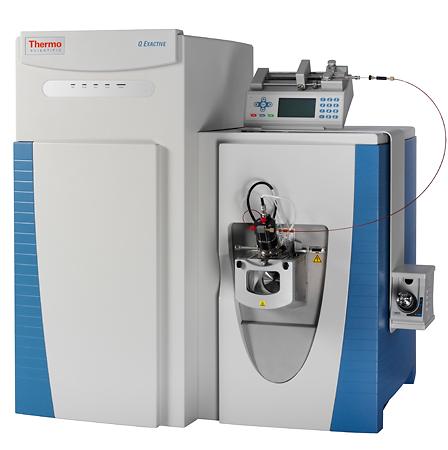Glycated Albumin Is a Promising Marker for Diabetes
|
By LabMedica International staff writers Posted on 30 Nov 2015 |
Although glucose level is the contributing factor and diagnostic marker for type 2 diabetes, there is an imperative need to look “beyond glucose” and to seek additional biomarkers that could better predict the risk for diabetes as well its diagnosis with accurate precision.
Human serum albumin is one of the most abundant plasma proteins that readily undergoes glycation, thus glycated albumin has been suggested as an additional marker for monitoring glycemic status in people with type 2 diabetes.
Scientists at the National Chemical Laboratory (Pune, India) collected blood samples from a diabetes specialized clinic as well as healthy controls. Diagnostic parameters, including fasting blood glucose, HbA1c, oral glucose tolerance test, postprandial blood sugar, lipids, urea, creatinine, and microalbumin were measured. Equal volumes of two plasma samples with similar HbA1c (deviation of less than 0.2%) were pooled, and three such pooled plasma in each group were used for mass spectrometric technical triplicate analysis.
The team used high resolution accurate mass spectrometry (HR/AM) which has paved the way for the fragment ion library that was used for quantification of glycated peptides of albumin in the context of diabetes. Glycation is a non-enzymatic chemical reaction between glucose and proteins leading to formation of advanced glycation end products (AGEs), which have been implicated in the pathogenesis of type 2 diabetes and its complications. All samples were analyzed on hybrid quadruple Q Exactive Hybrid Quadrupole-Orbitrap Mass Spectrometer (Thermo Scientific; Waltham, MA, USA).
Muthuswamy Balasubramanyam, PhD, senior author of the study said, “While earlier studies quantified only Amadori-modified lysine (AML) modifications, our study in addition characterized the carboxymethyl-lysine (CML) and carboxyethyl-lysine (CEL) modified peptides of albumin and this is an important advancement as CML and CEL are the predominant AGEs, constituting up to 80% of total AGEs. The association of CML modified peptides of albumin with prediabetes, diabetes, and microalbuminuria is a clinically relevant and therapeutically important finding.” The study was published originally online on August 1, 2015, in the journal Molecular Cell Proteomics.
Related Links:
National Chemical Laboratory
Thermo Scientific
Human serum albumin is one of the most abundant plasma proteins that readily undergoes glycation, thus glycated albumin has been suggested as an additional marker for monitoring glycemic status in people with type 2 diabetes.
Scientists at the National Chemical Laboratory (Pune, India) collected blood samples from a diabetes specialized clinic as well as healthy controls. Diagnostic parameters, including fasting blood glucose, HbA1c, oral glucose tolerance test, postprandial blood sugar, lipids, urea, creatinine, and microalbumin were measured. Equal volumes of two plasma samples with similar HbA1c (deviation of less than 0.2%) were pooled, and three such pooled plasma in each group were used for mass spectrometric technical triplicate analysis.
The team used high resolution accurate mass spectrometry (HR/AM) which has paved the way for the fragment ion library that was used for quantification of glycated peptides of albumin in the context of diabetes. Glycation is a non-enzymatic chemical reaction between glucose and proteins leading to formation of advanced glycation end products (AGEs), which have been implicated in the pathogenesis of type 2 diabetes and its complications. All samples were analyzed on hybrid quadruple Q Exactive Hybrid Quadrupole-Orbitrap Mass Spectrometer (Thermo Scientific; Waltham, MA, USA).
Muthuswamy Balasubramanyam, PhD, senior author of the study said, “While earlier studies quantified only Amadori-modified lysine (AML) modifications, our study in addition characterized the carboxymethyl-lysine (CML) and carboxyethyl-lysine (CEL) modified peptides of albumin and this is an important advancement as CML and CEL are the predominant AGEs, constituting up to 80% of total AGEs. The association of CML modified peptides of albumin with prediabetes, diabetes, and microalbuminuria is a clinically relevant and therapeutically important finding.” The study was published originally online on August 1, 2015, in the journal Molecular Cell Proteomics.
Related Links:
National Chemical Laboratory
Thermo Scientific
Read the full article by registering today, it's FREE! 

Register now for FREE to LabMedica.com and get complete access to news and events that shape the world of Clinical Laboratory Medicine. 
- Free digital version edition of LabMedica International sent by email on regular basis
- Free print version of LabMedica International magazine (available only outside USA and Canada).
- Free and unlimited access to back issues of LabMedica International in digital format
- Free LabMedica International Newsletter sent every week containing the latest news
- Free breaking news sent via email
- Free access to Events Calendar
- Free access to LinkXpress new product services
- REGISTRATION IS FREE AND EASY!
Sign in: Registered website members
Sign in: Registered magazine subscribers
Latest Clinical Chem. News
- POC Saliva Testing Device Predicts Heart Failure in 15 Minutes

- Screening Tool Detects Multiple Health Conditions from Single Blood Drop
- Integrated Chemistry and Immunoassay Analyzer with Extensive Assay Menu Offers Flexibility, Scalability and Data Commutability
- Rapid Drug Test to Improve Treatment for Patients Presenting to Hospital
- AI Model Detects Cancer at Lightning Speed through Sugar Analyses
- First-Ever Blood-Powered Chip Offers Real-Time Health Monitoring
- New ADLM Guidance Provides Expert Recommendations on Clinical Testing For Respiratory Viral Infections
- 3D Printed Point-Of-Care Mass Spectrometer Outperforms State-Of-The-Art Models
- POC Biomedical Test Spins Water Droplet Using Sound Waves for Cancer Detection
- Highly Reliable Cell-Based Assay Enables Accurate Diagnosis of Endocrine Diseases
- New Blood Testing Method Detects Potent Opioids in Under Three Minutes
- Wireless Hepatitis B Test Kit Completes Screening and Data Collection in One Step
- Pain-Free, Low-Cost, Sensitive, Radiation-Free Device Detects Breast Cancer in Urine
- Spit Test Detects Breast Cancer in Five Seconds
- Electrochemical Sensors with Next-Generation Coating Advances Precision Diagnostics at POC
- First-Of-Its-Kind Handheld Device Accurately Detects Fentanyl in Urine within Seconds
Channels
Molecular Diagnostics
view channel
Respiratory Panel to Help Clinicians Make Precise Treatment Decisions in Outpatient Settings
Respiratory tract infections are the primary reason for visits to emergency departments and subsequent hospitalizations. In the U.S., it is estimated that there are up to 41 million cases of influenza... Read more
Integrating Cardiovascular Risk Biomarkers Aids in Detection of ‘Inflammaging’
Cardiovascular diseases (CVD) continue to be the leading cause of death globally, responsible for nearly one-third of all fatalities worldwide. Traditionally, risk assessment for CVD has focused on well-established... Read more
Genetic Signature in Newborns Predicts Neonatal Sepsis Before Symptoms Appear
Neonatal sepsis, which occurs due to the body’s abnormal response to severe infection within the first 28 days of life, results in approximately 200,000 deaths globally each year. This condition affects around 1.... Read more.jpeg)
Integrating Multiple Protein Markers Predicts Health Outcomes in Chronic Kidney Disease Patients
Previous attempts to discover novel kidney biomarkers as risk factors for chronic kidney disease (CKD) progression have generally focused on evaluating proteins individually, which limits their prognostic... Read moreHematology
view channel
Next Gen CBC and Sepsis Diagnostic System Targets Faster, Earlier, Easier Results
Every hour is critical in protecting patients from infections, yet there are currently limited tools to assist in early diagnosis before patients reach a hospital. The complete blood count (CBC) is a common... Read more
Newly Discovered Blood Group System to Help Identify and Treat Rare Patients
The AnWj blood group antigen, a surface marker discovered in 1972, has remained a mystery regarding its genetic origin—until now. The most common cause of being AnWj-negative is linked to hematological... Read more
Blood Platelet Score Detects Previously Unmeasured Risk of Heart Attack and Stroke
Platelets, which are cell fragments circulating in the blood, play a critical role in clot formation to stop bleeding. However, in some individuals, platelets can become "hyperreactive," leading to excessive... Read moreImmunology
view channel
Computational Tool Predicts Immunotherapy Outcomes for Metastatic Breast Cancer Patients
Immunotherapy aims to enhance the body’s immune response to target cancer cells, but not all patients experience a positive reaction to such treatments. Identifying which patients will benefit from immunotherapy... Read more
Biomarker Could Predict Immunotherapy Response in Liver Cancer
Until recently, patients diagnosed with hepatocellular carcinoma had limited treatment options, with existing therapies extending life by only a few months. Immunotherapy has emerged as a new alternative... Read more
Epigenetic Test Could Determine Efficacy of New Immunotherapy Treatments Against Multiple Myeloma
Multiple myeloma is a blood cancer that primarily affects individuals over the age of sixty, and its occurrence rises as the population ages. In this disease, the bone marrow—the spongy tissue inside bones... Read moreMicrobiology
view channel
High-Accuracy Bedside Test to Diagnose Periprosthetic Joint Infection in Five Minutes
Periprosthetic joint infection (PJI) represents a significant global issue that is worsening as the number of joint replacements increases due to aging populations. In the United States alone, the anticipated... Read more_1.jpg)
Innovative Diagnostic Approach for Bacterial Infections to Enable Faster and Effective Treatment
For patients with bacterial infections, timely treatment with the appropriate antibiotics significantly improves their chances of recovery. Current methods for identifying which antibiotics will be effective... Read more
Non-Invasive Stool Test to Diagnose Endometriosis and Help Reduce Disease Progression
Endometriosis, a painful condition impacting nearly 200 million women globally, occurs when tissue similar to the lining of the uterus grows outside its usual location, such as on the intestines or the... Read more
Automated Positive Blood Culture Sample Preparation Platform Designed to Fight Against Sepsis and AMR
Delayed administration of antibiotics to patients with bloodstream infections significantly increases the risk of morbidity and mortality. For optimal therapeutic outcomes, it is crucial to rapidly identify... Read morePathology
view channel
New Imaging Method Opens Door to Precision Diagnostics for Head and Neck Cancers
Head and neck cancers, while considered rare, represent a significant portion of cancer cases and have seen a notable increase over the past 30 years. These cancers encompass various malignant tumors that... Read more
Faster Measurement of Vibrational Fingerprint of Molecules to Advance Biomedical Diagnostics
Identifying different types of molecules and cells is a vital process in both basic and applied science. Raman spectroscopy serves as a widely utilized measurement technique for this purpose.... Read moreTechnology
view channel
New Noninvasive Methods Detect Lead Exposure Faster, Easier and More Accurately at POC
Exposure to lead can negatively affect health in multiple ways, leading to damage in the brain and central nervous system, delays in development and growth, learning and behavioral issues, problems with... Read more
Noninvasive Test Detects Malaria Without Blood Sample
Malaria remains a significant global health issue, with approximately 250 million cases and over 600,000 deaths reported annually. Nearly half of the world's population is at risk for malaria infection,... Read moreIndustry
view channel
Beckman Coulter Partners with BioPorto for Global Distribution of Acute Kidney Injury NGAL Tests
Acute kidney injury (AKI) is a sudden episode of kidney failure or damage that can occur within a few hours or days. This condition leads to the accumulation of waste products in the blood and disrupts... Read more_1.jpg)
CACLP 2025 New Date and Venue Announced
The 22nd China International In Vitro Diagnostic Expo, organized by the China Association of Clinical Laboratory Practice Expo (CACLP, Shanghai, China), is set to take place from March 21 to 24, 2025,... Read more
Roche to Develop New Diagnostic Technologies for Traumatic Brain Injuries
Traumatic brain injuries (TBI) represent a significant global health issue, affecting approximately 69 million people each year. TBI occurs when an external force disrupts normal brain function, with severity... Read more

















